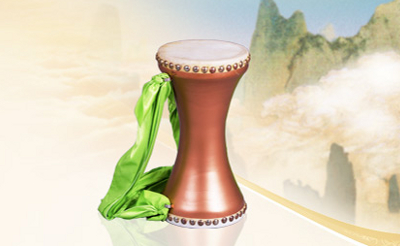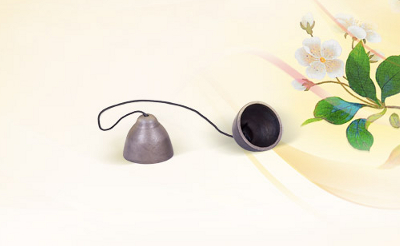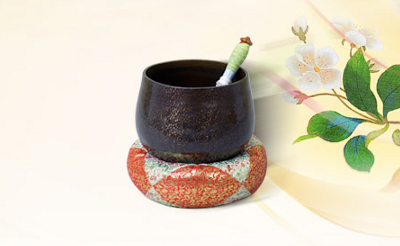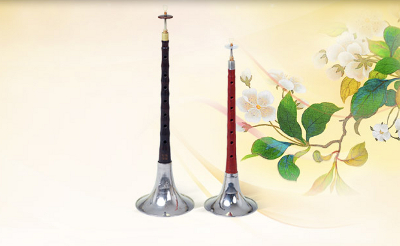Chinese musical instruments are one of the treasures of Chinese history and culture. The instruments used in China’s music include many different types such as percussion, strings, and even wind instruments.
Table of Contents
Introduction
Chinese instruments are classified by their material construction into eight categories:
- jin (金, metal)
- shi (石, stone)
- tu (土, clay)
- ge (革,hide)
- si (絲, silk)
- mu (木, wood)
- bao (匏, gourd)
- zhu (竹, bamboo)
Collectively, these eight classifications are known as the ba yin (八音), or “the eight sounds.”
All materials used to make these instruments originate from nature, and the significance and symbolism of each is closely tied.
Beijing Opera’s music is not the only one in China which accompanies Chinese dances.
There are innumerable other dances in China that need to accompany with music in order to show the characteristics of that dance.
We explore top 8 Chinese traditional instruments which are most used to accompany dancing in this article.
Dizi (竹笛) — Bamboo Flute
The Chinese bamboo flute, dizi, is a wind instrument that produces sound by means of air pressure variations. Its musical scale is similar to that of the recorder.

The Chinese flute is a popular instrument that is carved out of a single piece of bamboo with a cork-lined blow-hole . It is played horizontally, much like a western flute.
A dizi has six finger-holes. It has an extra hole between the blow-hole and finger-holes . This makes it more resonant and produces a hum.
Dizi music is performed by sliding and popping notes, and also by playing multiple notes simultaneously.
Some of the best dizi performer can produce a wide variety of intricate sound through lengthy and difficult training. This technique can produce amazing ranges of sounds, and can add a distinctive timbre to the music.
Drum—War Drum, Waist Drum
The drum is a musical instrument that is made from a long hollow cylinder with a skin drum on one end. When it strikes its skin with a small padded stick or beaters, the sudden loud vibration creates rhythmical sounds. It has been widely used in traditional folk performing arts to accompany dancing.
War Drum (戰鼓)
“War drums” were used on the battlefield to direct and galvanize the soldiers. There are different beats for attack and retreat.

These Chinese drums are still considered a tool of war, but they have since been transformed into folk art. They continue to play a powerful role in expressing the spirit of the Chinese people.
Waist Drum (腰鼓)
The waist drum is shaped like an hourglass with circular drumheads on both ends. It is about 15 inches long. It produces a medium pitch. It can be attached to the waist by colored ribbons, allowing the dancers great mobility as they dance.

Waist drums first became popular in Shaanxi province in north-central China. They are played during folk dance performances where performers jump, kick, and dance, while drumming. The drums play upbeat rhythms that are cheerful and lively.
Erhu (二胡) — the Chinese Violin
The erhu is one of the two string instruments that are used in Chinese traditional music. It is similar to violin.
The erhu is not a bowed instrument, but it is played with a bow. It has been played for over 4000 years in China.
The erhu is often used to accompany other instruments, such as the Chinese flute, and Chinese guitar.

The erhu has a unique sound and playing style. It is usually played sitting, and is played by strumming and plucking with only one hand.
Strings are held between the musician’s index and middle fingers and moved back and forth to create notes. Players press their fingertips against the strings and move the strings in order to play.
No fingerboard means players must keep their fingers on the strings to make the instrument play. The erhu has no frets; the bow is already between the strings, and the hair of the bow is either pushed forward or backward to catch a string.
To keep intonation, the same amount of pressure needs to be applied in different positions and degrees of pressure.
The erhu is an incredibly expressive, musical instrument. Its melodies can be tender or somber. It is especially stirring and moving when played in the lowest and middle ranges
Gong (大鑼)
The gong is a Chinese musical instrument. It is a hollow metal vessel with a fixed bottom. It is struck by a mallet, in order to create a loud and resonant sound.

The gong has a rich and powerful tone. It can emphasize a dance’s rhythm and beat. The loud, sonorous sound demands attention
The smaller and thinner hand gongs can produce a variety of sounds and can be used with other hand cymbals and drums to create music that evokes a celebratory mood.
In Chinese performing arts, Gong is one of the most popular instruments. It can be used to accompany traditional folk music, or it can be used as an accompaniment to other instruments.
Pengling (碰铃) — Hand Bells
The pengling hand bells are small cup-shaped brass or copper bells connected by a string. They produce a clear and lovely sound when struck together.

This instrument was originally used in China around the 4th century and was depicted in Buddhist murals and sculptures of the famous Dunhuang caves.
These two identical bells have many different names—pengling or pengzhong (struck bells), dual chime bowls, bell cymbals.
The hand bells are often used in traditional Chinese music and dance, folk songs and dances, and Chinese instrument ensembles.
Pipa (琵琶) — Chinese Lute
The pipa, or the Chinese Lute, has reigned as the “king” of Chinese folk instruments for thousands of years. It is a pear-shaped stringed instrument with four strings. it is one of the most expressive Chinese musical instruments.

The plucked instrument is a lyre and is often used by female characters in ancient Chinese paintings
The pipa has four strings and the length of its body is three feet and five inches in Chinese measurement. The body construction of the pipa demonstrates ancient Chinese beliefs:
- The three feet represent the 3 powers—heaven, the earth, and man;
- The five inches represent the 5 elements—metal, wood, water, fire, and earth; and
- The four strings represent the 4 seasons.
The playing technique of the pipa is quite difficult. It is played by plucking , but is held upright with the base on the lap and the neck at the player’s shoulder.
Qing (磬) — The Bowl Bell
The qing is one of most ancient Chinese musical instruments, and was classified as the stone instrument in the Zhou Dynasty (1046–256 B.C.).

Because “qing” also means “celebration” in Chinese, so these bowl bells became auspicious symbols.
Monasteries in China ring these bowl bells to call the monks together; therefore qings also became an important Buddhist musical instrument.
In the Shen Yun orchestra, they can give certain compositions a sacred feeling.
Suona (唢呐) — the Chinese Trumpet
The suona is one of the most fun and unique Chinese musical instruments. Along with the erhu and pipa, the suona is one of the most important instruments in Chinese music.

It can produces clear and bright sounds when skillfully played. So it is often used to accentuate the rhythm of weddings, funerals, and the celebrating of festivals.
In a dance performance, the suona can add an extra humorous effect to the character of a performer.
Frequently Asked Questions
What are the most popular Chinese musical instruments?
The 5 most poplar Chinese musical insturements today are: Erhu(二胡), Guzheng (古筝) , pipa (琵琶), guqin (古琴), Xiao (箫).
How to choose a Chinese musical instrument?
1. Check the price.
2. Check the brand name.
3. Check the size.
4. Check the sound quality.
How does the performance of Chinese traditional music differ from Western music?
The Chinese traditional music is usually simple and slow, and there are fewer instruments than in Western music.
Traditional Chinese music is much more ritualistic than Western music.
The instruments used in traditional Chinese music are much simpler than those used in Western music.
There is no piano in traditional Chinese music, but there are other instruments used.
What are some of the Chinese musical instruments that accompany dancing?
The Chinese musical instruments commonly used with the dance performing are: Drum, Erhu, Flute, Gong, GuQin, GuZhen, Pipa.
Resources
- shenyunperformingarts.org
- en.wikipedia.org










